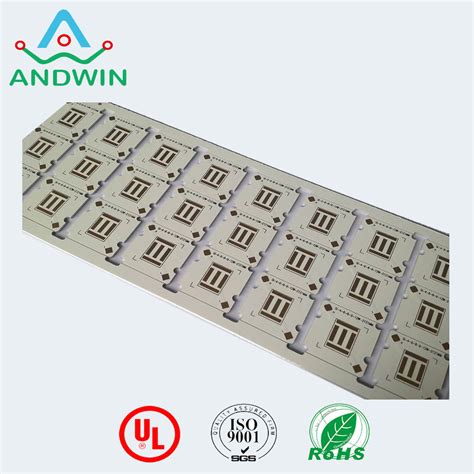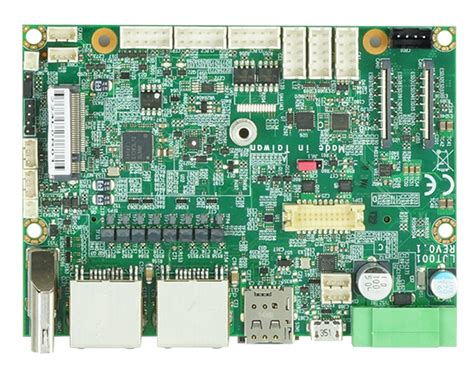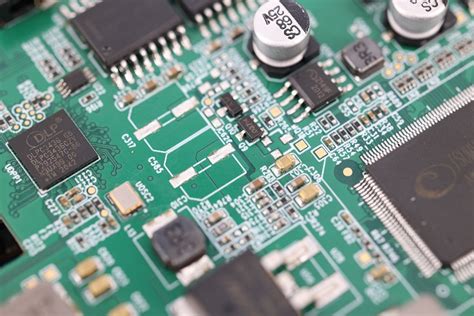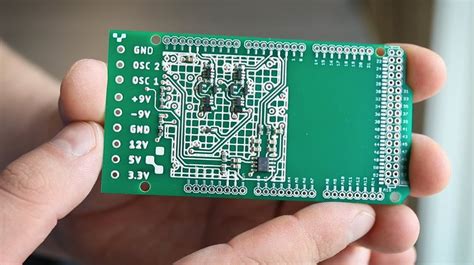Innovative Approaches to Aluminum PCB Prototyping Techniques

Key Takeaways
When diving into aluminum PCB prototyping, several critical factors can significantly impact your project’s success. By prioritizing thermal performance, you ensure that your designs can effectively dissipate heat, which is essential in high-power applications. Understanding that pcb manufacturing processes directly influence the thermal characteristics of your finished product helps when selecting the right techniques and materials. Moreover, you should consider the roles of electrical isolation and mechanical strength; both are crucial for creating reliable and durable prototypes.
Investing time in learning about advanced design tools can provide you with unparalleled customization capabilities, enabling you to tailor your PCB designs to meet specific project requirements while balancing costs. The insights gained from reputable pcb manufacturing companies can offer guidance on managing pcb manufacturing costs, ultimately benefiting your pcb manufacturing business.
Here’s a simple table highlighting the key benefits of aluminum PCBs over traditional materials:
| Feature | Aluminum PCBs | Traditional PCBs |
|---|---|---|
| Thermal Conductivity | High | Moderate |
| Weight | Lightweight | Heavier |
| Mechanical Strength | Superior | Adequate |
| Customization Flexibility | Excellent | Limited |
"Leveraging innovative techniques in aluminum PCB prototyping will undoubtedly elevate the efficiency and performance of your electronic projects."
Staying informed about industry trends will enhance your approach, ensuring you select materials and techniques that not only meet but exceed performance expectations.

Introduction to Aluminum PCB Prototyping
Aluminum PCB prototyping is at the forefront of modern PCB manufacturing, offering innovative solutions that cater to the stringent demands of today’s electronic applications. As you delve into this field, you will discover that aluminum substrates provide superior thermal performance, significantly reducing the risk of overheating in high-power electronic devices. This is particularly vital in applications where excessive heat can compromise not only performance but also longevity. The unique properties of aluminum make it an ideal choice for PCB manufacturing companies looking to enhance their product reliability and efficiency.
Moreover, achieving proper electrical isolation in PCB design is crucial for maintaining signal integrity and preventing short circuits. Aluminum PCBs excel in this regard as they allow for thoughtful design not only focused on electrical performance but also on mechanical strength. The rigidity offered by aluminum helps in providing a robust framework that supports complex electronic components, thereby ensuring durability.
In your journey through pcb manufacturing, embracing advanced design tools becomes essential for customizing aluminum PCBs to meet specific project requirements effectively. By leveraging these tools, you can optimize aspects such as thermal management and mechanical integrity while keeping an eye on the pcb manufacturing cost. Engaging with innovative techniques will also place your projects ahead of the competition, positioning your pcb manufacturing business for success in a rapidly evolving industry landscape.

The Importance of Thermal Performance in Aluminum PCBs
When you engage in aluminum PCB prototyping, understanding the significance of thermal performance is crucial. Aluminum PCBs are renowned for their ability to dissipate heat more effectively than traditional PCB materials. This characteristic is particularly valuable in applications that generate substantial heat, such as power electronics and LED lighting. Ensuring efficient thermal management not only prolongs the lifespan of your devices but also significantly enhances their overall performance.
In the realm of pcb manufacturing, you must consider various factors that influence thermal performance, including thermal conductivity, copper thickness, and dielectric materials used. As thermal performance directly affects the reliability and efficiency of your product, collaborating with reputable pcb manufacturing companies can lead to superior results. These companies often provide integrated solutions that optimize each stage of the development process.
Moreover, you should be aware of the pcb manufacturing cost while aiming for high thermal efficiency. Sometimes, opting for innovations in design can minimize costs while maximizing thermal management capabilities. In the complex landscape of running a pcb manufacturing business, balancing costs and performance is essential for maintaining a competitive edge without compromising on quality or effectiveness in your projects.
Ultimately, prioritizing thermal performance during your aluminum PCB prototyping will not only meet technical requirements but also enhance your product’s marketability by ensuring that it operates reliably under demanding conditions.
Achieving Electrical Isolation in PCB Design
When designing PCBs, particularly those utilizing aluminum substrates, achieving electrical isolation is crucial for ensuring reliability and performance in your applications. Electrical isolation not only helps prevent short circuits but also improves the overall safety and longevity of electronic components. The choice of materials plays a significant role; aluminum PCBs inherently provide advantages due to their thermal properties, but they also require strategic approaches to enhance their electrical isolation characteristics.
To start, utilizing high-quality insulating layers can significantly reduce the likelihood of unintended electrical interactions between different layers of your PCB. When selecting a manufacturer, you should inquire about their insulation materials and techniques to ensure they meet your project specifications. This consideration is essential as it can influence the long-term success of your designs and affect the overall PCB manufacturing cost.
Moreover, working with reputable PCB manufacturing companies can provide you access to advanced techniques that allow for precise placement of isolation features within your design. From specifying clearances that comply with industry standards to employing distinctive layout strategies, there are numerous effective methods to enhance electrical isolation while maintaining desirable thermal performance.
Additionally, consider the electrical properties of the other materials used in conjunction with your aluminum PCB. Integrating capable insulation components can further elevate your project’s effectiveness. The integration of these strategies not only mitigates risks related to electrical interference but also enhances the reliability and functionality of your final product, thus making a substantial impact on your pcb manufacturing business outcomes.
Enhancing Mechanical Strength with Innovative Techniques
In the realm of aluminum PCB prototyping, enhancing mechanical strength is paramount for enduring performance in various applications. You should explore innovative techniques that not only bolster the structural integrity of the board but also address challenges associated with traditional pcb manufacturing methods. One effective approach involves utilizing advanced materials that exhibit superior tensile strength, ensuring your PCBs can withstand physical stresses encountered during operation. Incorporating reinforcement layers can significantly amplify strength while maintaining a lightweight profile, ideal for modern electronic devices.
Additionally, design tweaks in the manufacturing process, such as optimizing hole patterns and board thickness, can dramatically improve durability without escalating the pcb manufacturing cost. Techniques such as laser etching and advanced surface treatments enhance bonding between layers, further enhancing mechanical attributes. By partnering with reputable pcb manufacturing companies, you gain access to cutting-edge technologies that facilitate these improvements, allowing your designs to excel in both performance and longevity. Overall, these innovative strategies not only lead to superior mechanical strength but also contribute to successful outcomes for your pcb manufacturing business.
Customization Capabilities with Advanced Design Tools
With the rise of aluminum PCB prototyping, customization has become a vital aspect of the design process. By leveraging advanced design tools, you can achieve a level of precision that was previously unattainable. These tools allow you to tailor your PCB manufacturing projects to meet specific performance criteria, ensuring that every aspect—from thermal conductivity to electrical isolation—is optimized for your unique application. When collaborating with PCB manufacturing companies, the ability to customize becomes crucial, as it can significantly influence both the pcb manufacturing cost and overall effectiveness of your project. With advanced software, you can explore various configurations and materials, experimenting with different layouts that enhance mechanical strength without compromising on functionality. This flexibility can transform your ideas into tangible products, driving innovation in your pcb manufacturing business while ensuring that your designs stand out in a competitive market. By prioritizing customization through these advanced tools, you empower yourself to create high-quality aluminum PCBs that meet even the most demanding specifications.

Future Trends in Aluminum PCB Prototyping
As you delve into the future trends in aluminum PCB prototyping, you’ll find that innovation is revolutionizing the pcb manufacturing landscape. With the rise of electric vehicles, renewable energy systems, and high-frequency applications, there is an increasing demand for aluminum PCBs that can meet these specifications. Advanced technologies, such as 3D printing and laser processing, are significantly impacting how pcb manufacturing companies produce aluminum boards, allowing for faster prototyping and reduced lead times while maintaining high accuracy and quality. Furthermore, improved thermal management solutions are being integrated into designs, ensuring that your prototypes can effectively manage heat dissipation without compromising performance.
Add to this the evolution of software tools that enable better simulation and visualization during the design phase. These advanced design tools not only reduce pcb manufacturing costs but also enhance your ability to customize designs to meet specific project requirements. This level of customization will help you stay ahead in a competitive market where your ability to adapt quickly can make or break your projects.
With emerging techniques like embedded passive components in aluminum substrates, you will see a dramatic shift towards more compact and reliable PCB designs. Such innovations not only improve mechanical strength but also facilitate better electrical isolation—a critical factor in high-performance applications. As you look towards the future of aluminum PCB prototyping, embracing these trends will be essential for success in your pcb manufacturing business, positioning yourself as a leader in this rapidly evolving industry.
Conclusion: Elevating Your Projects with Aluminum PCBs
Incorporating aluminum PCBs into your projects can significantly enhance their overall quality and performance. By focusing on thermal performance, you ensure that heat dissipation is managed effectively, which is crucial in high-power applications. Similarly, the importance of electrical isolation cannot be understated, as it helps in preventing short circuits and improving safety. Utilizing innovative techniques to boost mechanical strength allows your designs to withstand rigorous conditions, thereby increasing their reliability. Moreover, the availability of advanced design tools provides you with incredible customization capabilities. These tools empower you to tailor your aluminum PCB layout according to specific requirements, optimizing both functionality and efficiency in your designs. As the demand for specialized electronic components continues to rise, engaging with reputable pcb manufacturing companies can also streamline your production process and help manage pcb manufacturing costs effectively. This strategic approach positions you favorably within the growing pcb manufacturing business, allowing you not just to meet current market demands but also to innovate for future challenges. By adopting these practices and leveraging aluminum’s unique properties, you elevate your projects beyond simple assemblies into high-performance solutions that stand out in a competitive landscape.
Conclusion: Elevating Your Projects with Aluminum PCBs
In today’s competitive landscape of pcb manufacturing, leveraging aluminum PCBs can significantly set your projects apart. By integrating innovative techniques in aluminum PCB prototyping, you can enhance thermal performance, ensuring that your designs are not only more efficient but also reliable. This performance improvement is crucial in industries where heat dissipation is essential, like telecommunications and automotive applications. Furthermore, achieving electrical isolation is paramount; modern design tools help you navigate this challenge effectively, which is often a concern for both engineers and pcb manufacturing companies. Additionally, these advanced techniques bolster mechanical strength, enabling your prototypes to withstand harsher environments without compromising functionality.
Customization through these advanced design tools also plays a vital role; it allows you to tailor your PCB designs based on specific project needs, which can reduce overall pcb manufacturing costs and ultimately benefit your pcb manufacturing business. By embracing these approaches, you can not only elevate the quality of your projects but also position yourself favorably within the ever-evolving landscape of electronics production. As you adopt these cutting-edge methodologies, consider how they align with future trends in the industry to ensure sustained success and innovation in your designs.

FAQs
What is aluminum PCB prototyping?
Aluminum PCB prototyping involves the use of aluminum-based materials in the manufacturing of printed circuit boards (PCBs). This technique is particularly beneficial due to its ability to improve thermal management, which is essential for high-power applications.
Why is thermal performance important in PCB manufacturing?
Thermal performance plays a crucial role in the reliability and longevity of PCBs. Effective heat dissipation prevents overheating, which can lead to failures. Choosing PCB manufacturing companies that excel in developing aluminum PCBs can greatly enhance your project’s overall efficiency.
How can I achieve electrical isolation with aluminum PCBs?
Electrical isolation can be attained through careful design and material selection during the PCB manufacturing process. Utilizing specific insulation materials or designing multilayer boards ensures that each layer maintains its functionality without interference, contributing to a safer and more reliable product.
What are the mechanical strength advantages of using aluminum in PCBs?
Aluminum offers inherent mechanical benefits, such as increased durability and resistance to bending or cracking. These properties are particularly advantageous in applications where PCBs are subject to stress or movement. Understanding how pcb manufacturing cost varies based on materials can inform your choices for optimal results.
How does advanced design tools enhance customization in PCB projects?
Advanced design tools allow for tailored solutions that meet specific project requirements. You can use these tools to modify layouts, optimize thermal and electrical performance, and ensure that mechanical properties align with your project’s needs. This level of customization directly affects your pcb manufacturing business, offering competitive advantages.
For more detailed insights into PCB manufacturing, please click here: https://www.andwinpcb.com/pcb-manufacturing/.






